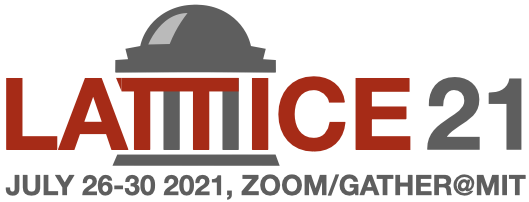Speaker
Description
Monopoles play crucial roles in the color confinement mechanism through condensing in the QCD vacuum, and the instantons induce spontaneous chiral symmetry breaking. Monopoles and instantons are closely related to each other and interact among quarks and gluons in the QCD vacuum. It is very interesting if we can show a clue to observe monopoles and instantons by experiments. Therefore, we perform numerical simulations of lattice gauge theory and investigate the effects of monopoles and instantons on the hadrons.
First, we apply the monopole creation operator to QCD vacua and add one pair of monopole and anti-monopole to the QCD vacua of the quenched SU(3), varying the magnetic charges. Second, we estimate the effects of the monopoles and instantons on observables using the eigenvalues and eigenvectors of the overlap Dirac operator that preserves the exact chiral symmetry. Finally, we compare the numerical results with the predictions and find quantitative relations among the monopoles, instantons, and observables.
In the previous research, we have found that the added monopoles and anti-monopoles create the instantons and anti-instantons without changing the vacuum structure. We have discovered the effects of these instantons and anti-instantons on the observables by increasing the number density of the instantons and anti-instantons as follows: the chiral condensate (defined as a negative value) decreases, masses of the light quarks and mesons become heavy, and decay constants of the light mesons increase. The decay width and lifetime of the charged pion are estimated using these outcomes. The decay width of the charged pion becomes wider than the experiment, and the lifetime of the charged pion becomes shorter than the experiment. Finally, we have obtained quantitative relations among these observables and the number density of the instantons and anti-instantons.
This research investigates the instanton effects on the hadrons: the vector, eta, eta prime mesons, etc. I will show the preliminary results in this presentation.




